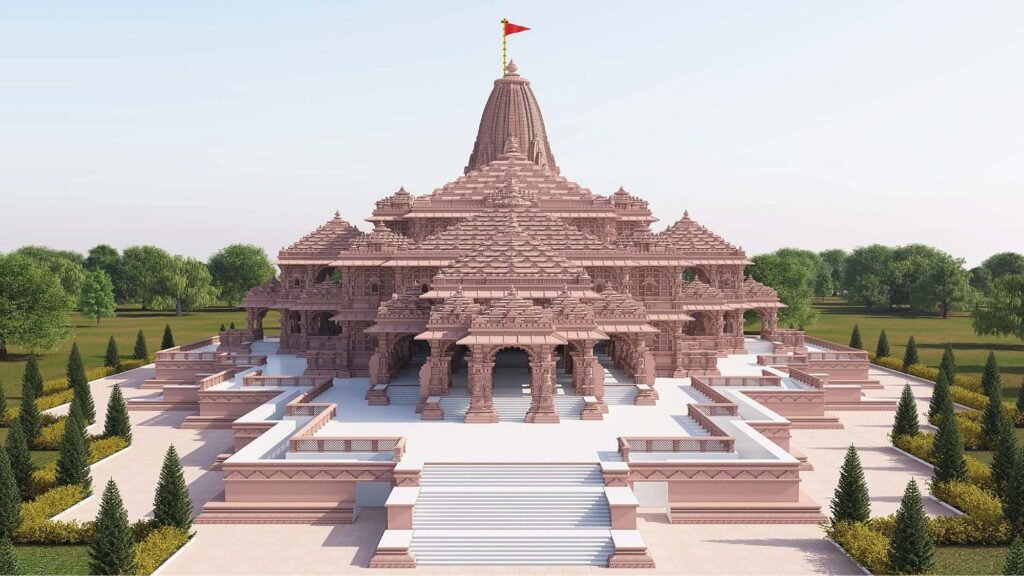In a momentous occasion that reverberated across the nation, the inauguration of the Ayodhya Mandir marked a significant milestone in India’s history. This grand event held immense historical, cultural, and religious importance, symbolizing the culmination of a journey that spanned centuries.
Historical Context and Cultural Importance
Ayodhya, the birthplace of Lord Ram, holds a special place in the hearts of millions of Hindus around the world. The city’s rich history and association with Lord Ram’s life have made it a revered pilgrimage site for centuries. The construction of the Ayodhya Mandir not only fulfills a long-standing dream of devotees but also serves as a testament to the resilience and devotion of the Indian people.
The struggle for the construction of the Mandir has been a significant part of India’s history. The dispute over the site, which began in the 19th century, has seen numerous legal battles and communal tensions. The peaceful resolution of this dispute and the subsequent construction of the Mandir is a testament to India’s commitment to secularism and harmony.
The Journey and Struggles Leading to Construction
The journey towards the construction of the Ayodhya Mandir was filled with challenges and obstacles. The legal battle over the ownership of the site lasted for decades, with both Hindu and Muslim communities staking their claim. The Supreme Court’s landmark verdict in November 2019 paved the way for the construction of the Mandir, bringing an end to the long-standing dispute.
The construction of the Mandir was a collective effort that involved the participation of millions of devotees from all walks of life. It was a testament to the unity and shared belief in the cultural heritage of India. The process of building the Mandir showcased the craftsmanship of Indian artisans and the dedication of countless individuals who contributed to its construction.
Religious and National Significance
The Ayodhya Mandir holds immense religious significance for Hindus worldwide. It is believed to be the birthplace of Lord Ram, one of the most revered deities in Hinduism. The construction of the Mandir not only fulfills a religious aspiration but also serves as a symbol of India’s rich cultural heritage.
Furthermore, the Ayodhya Mandir inauguration holds great national significance. It represents the unity and inclusiveness of India, where people from diverse backgrounds can come together to celebrate a shared heritage. The event showcased India’s commitment to secularism and its ability to resolve long-standing disputes peacefully.
Architecture and Symbolism
The architecture of the Ayodhya Mandir is a blend of traditional and modern elements. The temple’s design draws inspiration from the ancient Nagara style of architecture, characterized by its tall spires and intricate carvings. The use of pink sandstone in the construction pays homage to the rich architectural heritage of Ayodhya.
The Mandir’s symbolism goes beyond its architectural beauty. It represents the triumph of good over evil, as Lord Ram’s victory over the demon king Ravana is a central theme in Hindu mythology. The temple’s construction serves as a reminder of the values and teachings of Lord Ram, which emphasize righteousness, compassion, and the pursuit of truth.
Unity and Celebrations
The inauguration of the Ayodhya Mandir was a moment of great joy and celebration for millions of Indians. The event brought people from all walks of life together, transcending barriers of caste, creed, and religion. It served as a unifying force, strengthening the bonds of brotherhood and fostering a sense of national pride.
The celebrations surrounding the Ayodhya Mandir inauguration were marked by a spirit of festivity and reverence. Devotees from across the country flocked to Ayodhya to witness this historic moment. The streets were adorned with lights, and the air was filled with chants and hymns, creating an atmosphere of devotion and spirituality.
The Ayodhya Mandir inauguration was a testament to the resilience, faith, and unity of the Indian people. It not only signifies the fulfillment of a long-standing dream but also serves as a reminder of the cultural heritage and values that bind the nation together. The construction of the Mandir stands as a symbol of India’s commitment to secularism, harmony, and the preservation of its rich cultural legacy.

